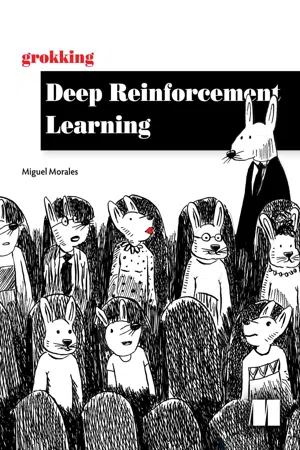
- 472 pages
- English
- ePUB (mobile friendly)
- Available on iOS & Android
Grokking Deep Reinforcement Learning
About this book
Grokking Deep Reinforcement Learning uses engaging exercises to teach you how to build deep learning systems. This book combines annotated Python code with intuitive explanations to explore DRL techniques. You'll see how algorithms function and learn to develop your own DRL agents using evaluative feedback. Summary
We all learn through trial and error. We avoid the things that cause us to experience pain and failure. We embrace and build on the things that give us reward and success. This common pattern is the foundation of deep reinforcement learning: building machine learning systems that explore and learn based on the responses of the environment. Grokking Deep Reinforcement Learning introduces this powerful machine learning approach, using examples, illustrations, exercises, and crystal-clear teaching. You'll love the perfectly paced teaching and the clever, engaging writing style as you dig into this awesome exploration of reinforcement learning fundamentals, effective deep learning techniques, and practical applications in this emerging field. Purchase of the print book includes a free eBook in PDF, Kindle, and ePub formats from Manning Publications. About the technology
We learn by interacting with our environment, and the rewards or punishments we experience guide our future behavior. Deep reinforcement learning brings that same natural process to artificial intelligence, analyzing results to uncover the most efficient ways forward. DRL agents can improve marketing campaigns, predict stock performance, and beat grand masters in Go and chess. About the book
Grokking Deep Reinforcement Learning uses engaging exercises to teach you how to build deep learning systems. This book combines annotated Python code with intuitive explanations to explore DRL techniques. You'll see how algorithms function and learn to develop your own DRL agents using evaluative feedback. What's inside
An introduction to reinforcement learning
DRL agents with human-like behaviors
Applying DRL to complex situations About the reader
For developers with basic deep learning experience. About the author
Miguel Morales works on reinforcement learning at Lockheed Martin and is an instructor for the Georgia Institute of Technology's Reinforcement Learning and Decision Making course. Table of Contents 1 Introduction to deep reinforcement learning 2 Mathematical foundations of reinforcement learning 3 Balancing immediate and long-term goals 4 Balancing the gathering and use of information 5 Evaluating agents' behaviors 6 Improving agents' behaviors 7 Achieving goals more effectively and efficiently 8 Introduction to value-based deep reinforcement learning 9 More stable value-based methods 10 Sample-efficient value-based methods 11 Policy-gradient and actor-critic methods 12 Advanced actor-critic methods 13 Toward artificial general intelligence
Frequently asked questions
- Essential is ideal for learners and professionals who enjoy exploring a wide range of subjects. Access the Essential Library with 800,000+ trusted titles and best-sellers across business, personal growth, and the humanities. Includes unlimited reading time and Standard Read Aloud voice.
- Complete: Perfect for advanced learners and researchers needing full, unrestricted access. Unlock 1.4M+ books across hundreds of subjects, including academic and specialized titles. The Complete Plan also includes advanced features like Premium Read Aloud and Research Assistant.
Please note we cannot support devices running on iOS 13 and Android 7 or earlier. Learn more about using the app.
Information
1 Introduction to deep reinforcement learning
- You will learn what deep reinforcement learning is and how it is different from other machine learning approaches.
- You will learn about the recent progress in deep reinforcement learning and what it can do for a variety of problems.
- You will know what to expect from this book and how to get the most out of it.
What is deep reinforcement learning?
Deep reinforcement learning is a machine learning approach to artificial intelligence
- The pages returned by a search engine
- The route produced by a GPS app
- The voice recognition and the synthetic voice of smart-assistant software
- The products recommended by e-commerce sites
- The follow-me feature in drones
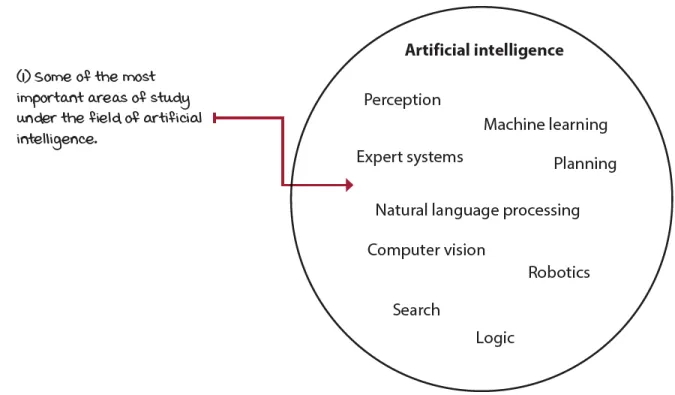
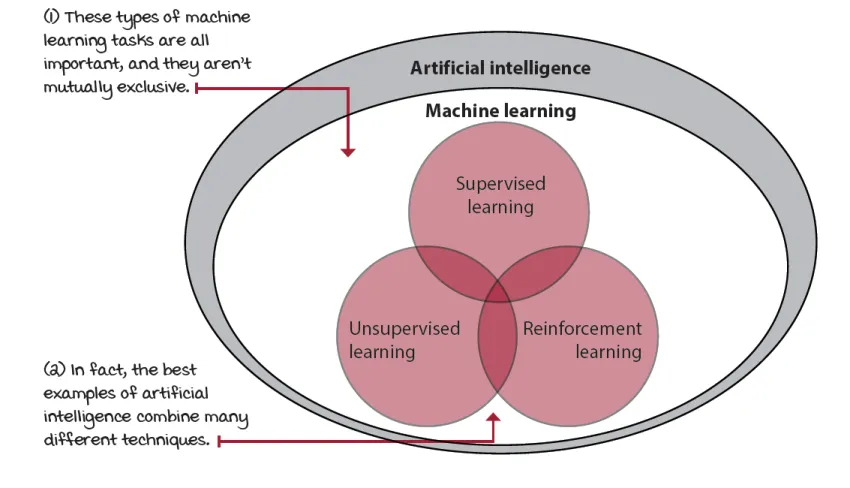
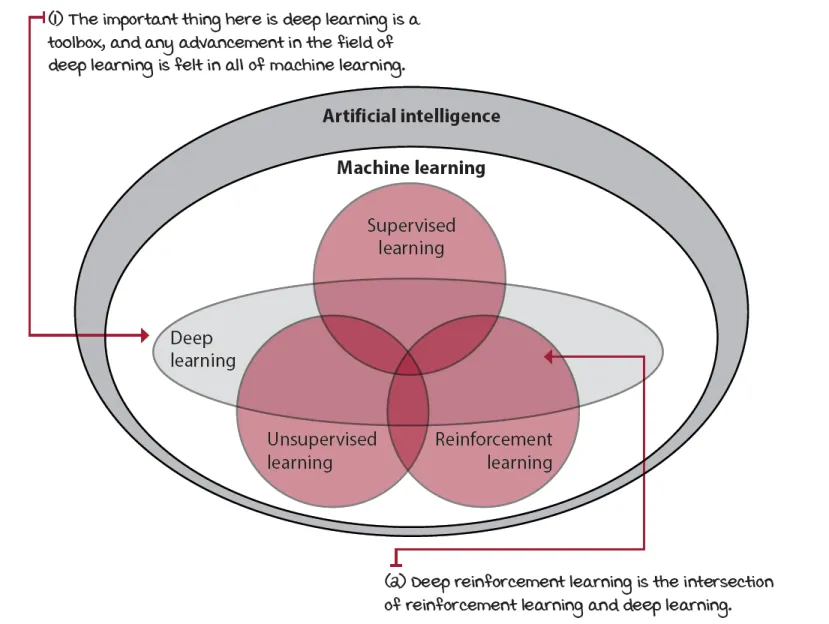
Deep reinforcement learning is concerned with creating computer programs

Deep reinforcement learning agents can solve problems that require intelligence
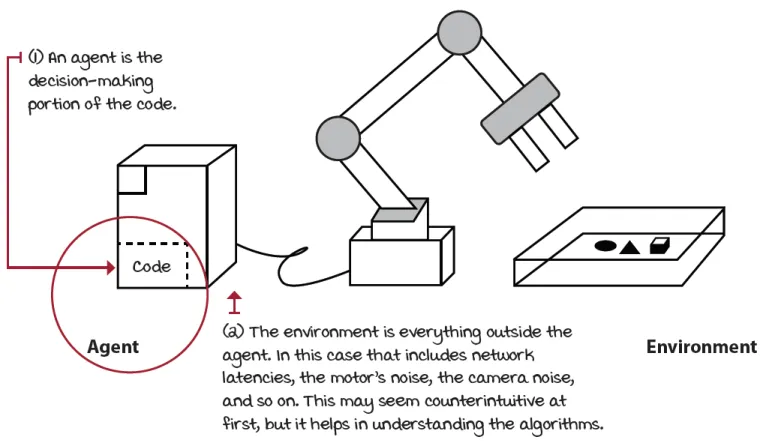
Table of contents
- Grokking Deep Reinforcement Learning
- Copyright
- dedication
- contents
- front matter
- 1 Introduction to deep reinforcement learning
- 2 Mathematical foundations of reinforcement learning
- 3 Balancing immediate and long-term goals
- 4 Balancing the gathering and use of information
- 5 Evaluating agents’ behaviors
- 6 Improving agents’ behaviors
- 7 Achieving goals more effectively and efficiently
- 8 Introduction to value-based deep reinforcement learning
- 9 More stable value-based methods
- 10 Sample-efficient value-based methods
- 11 Policy-gradient and actor-critic methods
- 12 Advanced actor-critic methods
- 13 Toward artificial general intelligence
- index